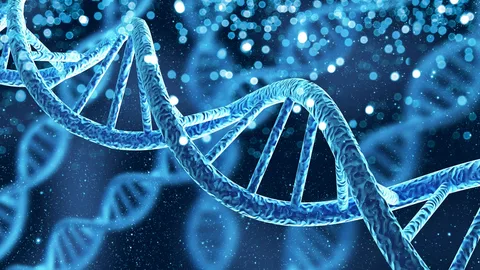Introduction
DNA, short for deoxyribonucleic acid, is one of the most remarkable molecules known to science. It serves as the blueprint of life, carrying the instructions that determine how every living organism develops, functions, and passes on traits to future generations. From the simplest bacteria to complex human beings, DNA plays a central role in the continuity of life. Understanding DNA not only helps us appreciate the complexity of biology but also provides insights into medicine, genetics, and the mysteries of evolution.
Structure of DNA
The structure of DNA is as fascinating as its function. In 1953, James Watson and Francis Crick, with contributions from Rosalind Franklin, revealed the double helix shape of DNA. This structure looks like a twisted ladder. The sides of the ladder are made of sugar and phosphate molecules, while the rungs consist of nitrogen bases. There are four bases: adenine, thymine, cytosine, and guanine. These bases pair in specific ways—adenine with thymine and cytosine with guanine. This pairing system ensures that DNA can be copied accurately during cell division.
DNA and Genetics
DNA carries genes, which are specific sequences of bases that provide instructions for making proteins. Proteins are essential molecules that carry out most of the functions in the body, from building tissues to regulating chemical reactions. The human genome contains about 20,000 to 25,000 genes, spread across 23 pairs of chromosomes. Variations in DNA sequences are what make each individual unique, influencing traits such as eye color, height, and even predisposition to certain diseases.
Role in Inheritance
One of the most important aspects of DNA is its role in inheritance. When organisms reproduce, they pass on DNA to their offspring. In humans, half of the DNA comes from the mother and half from the father. This combination creates genetic diversity, which is essential for survival and evolution. Mutations, or small changes in DNA, sometimes occur naturally. While some mutations may cause health issues, others can be beneficial, leading to adaptations that help species thrive in changing environments.
DNA in Medicine
The study of DNA has transformed modern medicine. Through genetic testing, doctors can now identify risks for certain diseases before they develop. This allows for preventive care and early treatment. DNA research has also made personalized medicine possible, where treatments are tailored to an individual’s genetic profile. Furthermore, understanding DNA has been vital in developing therapies for genetic disorders, cancers, and rare diseases. Breakthrough technologies like CRISPR have given scientists the ability to edit DNA, offering hope for curing conditions once thought untreatable.
Forensics and Identification
Beyond medicine, DNA plays a key role in forensics. Since each individual has a unique DNA sequence, it can be used for identification in criminal investigations, paternity cases, and disaster victim recovery. DNA profiling has become a powerful tool for justice, providing evidence that can either convict or exonerate individuals in legal cases. The reliability of DNA testing has made it one of the most trusted forms of evidence in modern law enforcement.
DNA and Evolution
DNA also provides insight into the history of life on Earth. By comparing DNA sequences of different species, scientists can trace evolutionary relationships and determine how closely organisms are related. This has helped build the tree of life, showing the connections between humans, animals, plants, and microorganisms. Fossil studies combined with DNA analysis have shed light on human evolution, including the relationships between modern humans, Neanderthals, and other ancient species.
Ethical Questions
As powerful as DNA research is, it also raises important ethical questions. Issues such as genetic privacy, designer babies, and cloning spark debates about the limits of science. While DNA technology has the potential to improve health and quality of life, it must be used responsibly to avoid misuse and inequality. Balancing innovation with ethical responsibility is one of the greatest challenges in the age of genetic research.
Conclusion
DNA is far more than just a molecule; it is the very foundation of life. Its discovery and study have revolutionized science, medicine, law, and our understanding of human history. From determining how we inherit traits to unlocking cures for diseases, DNA continues to shape the future of humanity. While challenges and ethical debates remain, the journey of exploring DNA has only just begun. As we learn more about this remarkable blueprint, it becomes clear that DNA holds the key to many of life’s greatest mysteries.












Comments are closed